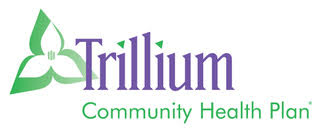Regence has requested a 22% rate increase in its individual and small group product which currently includes about 60,000 Oregonians.
All rate increase requests are public information, but are often written in a way that is incomprehensible unless you happen to be an actuary. But you – and every other Oregonians – can also weigh in on each and every request. So, a meeting like the one being held on June 2nd in Portland is rare, but we may be seeing more meetings like this in the future if the public can get engaged.
We had a few questions for Rachel Oh, consumer liaison for the Oregon Insurance Division. She provides guidance on consumer issues to the Insurance Division as they implement health care reform and evaluate legislative proposals. Rachel is also responsible for representing consumer interests during advisory committee meetings and is always looking for new volunteers (hint, hint) to represent consumers when the Insurance Division writes administrative rules.
Does the Insurance Division approve all rates?
(Rachel) No, the state must approve rates for insurance plans purchased by small employers (50 or fewer employees) and individuals who don’t get coverage through an employer and buy it directly from an insurance company. Also, the state must approve rates for portability plans, which allow some Oregonians who are leaving group coverage to stay insured even if they have pre-existing medical conditions. About 12 percent of Oregonians are covered by all these types of plans.
The state does not regulate plans of large employers (more than 50 employees). In these cases, insurance companies negotiate prices directly with employers.
What happens when you get a rate increase request?
(Rachel) When an insurer files a complete rate increase, we post all filing documents to our website, www.oregonhealthrates.org. Consumers then have 30 days to comment on the filing. All comments are posted on our website and considered when making our final decision. For some filings, OSPIRG also provides detailed comments on behalf of Oregon consumers. OSPIRG’s work to furnish comments to the department is funded by the division with federal grant dollars.
Division actuarial staff review each filing, particularly looking at insurer assumptions about key factors such as medical trends. We look at whether benefits are reasonable in relation to the premium charged, or in other words, is the policy priced fairly? If a company is losing money, it would likely meet this test because it is paying out more in benefits than it is taking in for premiums.
On the other hand, rates cannot be excessive, inadequate or unfairly discriminatory. Excessive means that insurers shouldn’t be gouging the public; unfairly discriminatory means that people in similar circumstances should pay similar rates and that rate increases should be shared appropriately between different groups of policy holders. So, we perform a balancing act. Rates must cover the cost of benefits and the insurance company’s costs to operate without being overpriced.
Once a rate is approved we also post online a plain-language explanation of why we approved a particular rate.
Do you get much public input?
(Rachel) The amount of public comments we receive for each rate filing really depends on how large an impact a filing will have. For small increase requests, we often receive only a handful of consumer comments. In comparison, we have received more than 800 comments on Regence’s most recent rate request. Perhaps that is due to the size of the requested increase and the fact that it affects nearly 60,000 Oregonians.
We do not ordinarily have public hearings as part of our process, but because of the size of the increase Regence is requesting and the number of people affected, we feel it is important to hear directly from impacted consumers in a public forum.
People can also sign up for our e-notify program, which sends out an e-mail when your insurance company files a rate request and when we have made a rate decision, click here.
What would be most helpful for the public to share with you?
(Rachel) Comments are most helpful when they address the legal standards we look at when approving rates. These include recent and future costs of medical care and prescription drugs, the company’s history of rate changes, its financial strength, premiums, and administrative costs. The division also considers the company’s overall profitability, investment income, and surplus. Insurers must show that the new rate is reasonable considering the plan’s benefits.
The division is allowed to consider the impact of rate increases on consumers when reviewing rates. For example, if a company is losing money in one line of insurance but profitable overall, the division might approve a smaller increase than the company needs to cover costs, to lessen the burden on consumers.
We have worked very hard over the last few years to increase the transparency of our rate review process and provide opportunities for consumers to be involved and get educated on our process. We believe that public hearings, such as this one for select rate filings, will help ensure the consumer voice is heard within this process. We invite the public to:
- Visit www.oregonhealthrates.org to learn about rates and search rate filings from numerous companies. There is currently a link on that page to information about the Regence public hearing. There, you can view Regence’s rate request and comment online.
- Check out the fact sheets available that explain how your premium dollar is spent.
- At the tab “About Rates”, there is a list of most frequently asked question.
Getting educated on the rate review process is very important, but we also understand that rising health insurance rates make it more and more difficult for Oregonians to afford insurance.
What will happen to input you receive?
(Rachel) Our staff review each and every comment received and consider all relevant factors when making final approval determination. When a decision is made, we post a summary explaining our reasoning. Anyone can sign up for our e-notify program (bottom right corner at this link) to be notified when we made a decision in this case.
Insurance Division Links:










Recent Comments